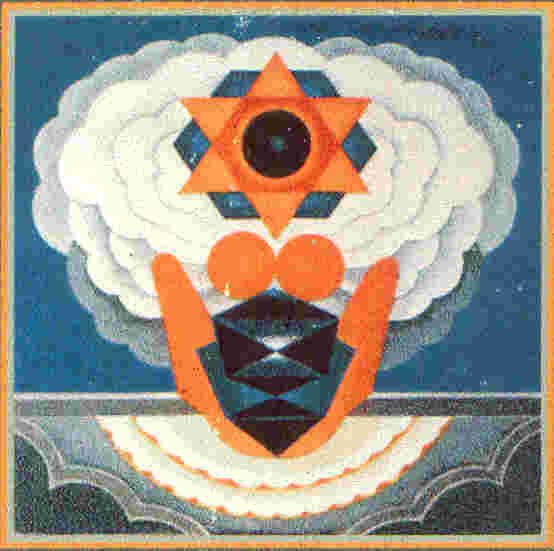|

|

|
|
Kashmiri Pandits' Association, Mumbai, India |

|
| | Home | April-June 2002 issue | |
|
Decline of the Kashmiri Identity*... Anil DharEven V.S.Naipaul failed to come to grips with the Kashmiri mind: he (in An area of Darkness) would never really know, as he prepared to leave the valley after a visit, whether his Kashmiri attendant - with tears in his eyes - was mourning his departure or hoping for more baksheesh. It's a risk most Kashmir-watchers incur: to dig a meaning deeper than what every Kashmiri outburst warrants. There is a gesture that is peculiar to the Kashmiri: the chin is held within the index finger and thumb and the word 'ghulam' uttered. This is when you want a favour from somebody. Naipaul probably observed this and dismissed the Kashmiri Muslim as one who 'identified with his (Islamic) conquerors', but had no idea of his pre-Islamic past. The emergence of a distant Kashmiri identity has been a more recent phenomenon and its first serious assertion occurred in 1931 when Sheikh Abdullah led a briefly violent agitation against the Maharaja. This assertion was distinct from the contemporary 'two nation' agenda that was taking shape among a few Muslims elsewhere. In fact, Abdullah was quick to drop 'Muslim' in the conference and replace it with 'National'. Kashmiri Pandits formed an important and vocal section of the National Conference. The success Jinnah gained in carving out a separate nation-state for Muslims in British India, however, provided Sheikh Abdullah a muddled vision of a similar role for himself in Kashmir. After Sheikh's detention in 1953, the ardor of Kashmiri separatism collapsed; helped, in part, by rapid reforms that brought land to the Muslim tiller. The sixties and early seventies were remarkable times here. The Kashmiri Muslim's religious moorings were tenuous. His daily concerns were more liberal than sacred. More Muslim children than Hindu, attended DAV Schools in Srinagar - unthinkable in any other part of India. The Kashmiri Muslim has, at most times, viewed himself a distinct from his Pakistani or Indian co-religionist. Significantly, the Kashmiri Muslim does not claim Afghan, Turkish or Arab descent as Muslims elsewhere are wont to do. Again, unlike elsewhere in the region, the Hindus and the Muslims in Kashmir have, until recently lived together. All this had made Kashmir as safe a place as any other. As late as 1985, only five violence related details were reported in a year in the entire Srinagar district! At that time Kashmir separatism was still incipient and New Delhi saw value in pumping vast sums of money to keep the moderate opinion going. The corruption and profligacy engineered a new social elite in Kashmir: PWD engineers, ‘civil’ and forest contractors, bureaucrats and their ‘multiplier effect’ communities of Sopore apple barons, and Kashmir emporia operators. Kashmiris love to present the valley as babe in the woods, with hungry Indian and sometimes Pakistani wolves breathing down its neck. This self-serving image was reiterated so often that Kashmiris came to believe that they were indeed the injured party. Even so, the accord Abdullah reached with Indira Gandhi was perceived as fair, and in 1977 the Kashmiri voted so in the now generally regarded the state’s last fair polls. But all this changed with the impact of the Iranian Revolution, an event that changed the Kashmiri’s self image entirely. Iran, to the Muslim world, was what France was to Europe in the 19th century, although the former moved in the direction contrary to the later in the terms of the libertarian values. The eighties saw the emergence of Islamic, as distinct from Kashmiri culture. The revolutionary idea that religion alone should be the basis of the culture and even politics, did not leave the voter unaffected. The political Kashmiri read developments like the success of 1979 Islamic Revolution, the rise of the Afghan Resistance in 1980, the 1983 suicide bombing of US barracks by Lebanese Shiite Hizbollah, the 1987 birth of Palestinian Hamas and the 1989 Soviet retreat from Afghanistan as a apart of a chain of events that promised a rightful place to Islam eventually. The JKLF, which had formed the vanguard of militant strikes in Kashmir, quickly lost its clout once it sought a secular face to further its efforts. Today secessionist groups in Kashmir, either outside or within the Hurriyat, draw inspiration from Islam and its history. The transformation of the Kashmiri Muslim from a dawdler to a frontline member of the Ummah has been remarkable both in extent and swiftness. The Kashmiri Pandit was quick to move out at the first sign of trouble and seek a pan-North Indian identity in Delhi. Clearly, both the sides of what is now an unambiguous religious divide are in a hurry to escape from, rather than assert, their Kashmiri identity. (* Reproduced from the Indian Express, Mumbai Dated
April 4, 2002.)
|
|
|
JOIN US |
|
|



